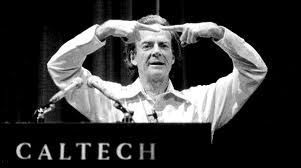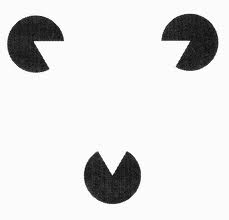MECE Framework, Analysis, Synthesis and Organization Architecture toward Problem-Solving
Posted by Hindol Datta
MECE is a thought tool that has been systematically used in McKinsey. It stands for Mutually Exclusive, Comprehensively Exhaustive. We will go into both these components in detail and then relate this to the dynamics of an organization mindset. The presumption in this note is that the organization mindset has been engraved over time or is being driven by the leadership. We are looking at MECE since it represents a tool used by the most blue chip consulting firm in the world. And while doing that, we will , by the end of the article, arrive at the conclusion that this framework alone will not be the panacea to all investigative methodology to assess a problem – rather, this framework has to reconcile with the active knowledge that most things do not fall in the MECE framework, and thus an additional system framework is needed to amplify our understanding for problem solving and leaving room for chance.
So to apply the MECE technique, first you define the problem that you are solving for. Once you are past the definition phase, well – you are now ready to apply the MECE framework.
MECE is a framework used to organize information which is:
- Mutually exclusive: Information should be grouped into categories so that each category is separate and distinct without any overlap; and
- Collectively exhaustive: All of the categories taken together should deal with all possible options without leaving any gaps.
In other words, once you have defined a problem – you figure out the broad categories that relate to the problem and then brainstorm through ALL of the options associated with the categories. So think of it as a mental construct that you move across a horizontal line with different well defined shades representing categories, and each of those partitions of shades have a vertical construct with all of the options that exhaustively explain those shades. Once you have gone through that exercise, which is no mean feat – you will be then looking at an artifact that addresses the problem. And after you have done that, you individually look at every set of options and its relationship to the distinctive category … and hopefully you are well on your path to coming up with relevant solutions.
Now some may argue that my understanding of MECE is very simplistic. In fact, it may very well be. But I can assure you that it captures the essence of very widely used framework in consulting organizations. And this framework has been imported to large organizations and have cascaded down to different scale organizations ever since.
Here is a link that would give you a deeper understanding of the MECE framework:
http://firmsconsulting.com/2010/09/22/a-complete-mckinsey-style-mece-decision-tree/
Now we are going to dig a little deeper. Allow me to digress and take you down a path less travelled. We will circle back to MECE and organizational leadership in a few moments. One of the memorable quotes that have left a lasting impression is by a great Nobel Prize winning physicist, Richard Feynman.
“I have a friend who’s an artist and has sometimes taken a view which I don’t agree with very well. He’ll hold up a flower and say “look how beautiful it is,” and I’ll agree. Then he says “I as an artist can see how beautiful this is but you as a scientist takes this all apart and it becomes a dull thing,” and I think that he’s kind of nutty. First of all, the beauty that he sees is available to other people and to me too, I believe. Although I may not be quite as refined aesthetically as he is … I can appreciate the beauty of a flower. At the same time, I see much more about the flower than he sees. I could imagine the cells in there, the complicated actions inside, which also have a beauty. I mean it’s not just beauty at this dimension, at one centimeter; there’s also beauty at smaller dimensions, the inner structure, also the processes. The fact that the colors in the flower evolved in order to attract insects to pollinate it is interesting; it means that insects can see the color. It adds a question: does this aesthetic sense also exist in the lower forms? Why is it aesthetic? All kinds of interesting questions which the science knowledge only adds to theexcitement, the mystery and the awe of a flower! It only adds. I don’t understand how it subtracts.”
The above quote by Feynman lays the groundwork to understand two different approaches – namely, the artist approaches the observation of the flower from the synthetic standpoint, whereas Feynman approaches it from an analytic standpoint. Both do not offer views that are antithetical to one another: in fact, you need both to gather a holistic view and arrive at a conclusion – the sum is greater than the parts. Feynman does not address the essence of beauty that the artist puts forth; he looks at the beauty of how the components and its mechanics interact well and how it adds to our understanding of the flower. This is very important because the following dialogue with explore another concept to drive this difference between analysis and synthesis home.
There are two possible ways of gaining knowledge. Either we can proceed from the construction of the flower ( the Feynman method) , and then seek to determine the laws of the mutual interaction of its parts as well as its response to external stimuli; or we can begin with what the flower accomplishes and then attempt to account for this. By the first route we infer effects from given causes, whereas by the second route we seek causes of given effects. We can call the first route synthetic, and the second analytic.
We can easily see how the cause effect relationship is translated into a relationship between the analytic and synthetic foundation.
A system’s internal processes — i.e. the interactions between its parts — are regarded as the cause of what the system, as a unit, performs. What the system performs is thus the effect. From these very relationships we can immediately recognize the requirements for the application of the analytic and synthetic methods.
The synthetic approach — i.e. to infer effects on the basis of given causes — is therefore appropriate when the laws and principles governing a system’s internal processes are known, but when we lack a detailed picture of how the system behaves as a whole.
Another example … we do not have a very good understanding of the long-term dynamics of galactic systems, nor even of our own solar system. This is because we cannot observe these objects for the thousands or even millions of years which would be needed in order to map their overall behavior.
However, we do know something about the principles, which govern these dynamics, i.e. gravitational interaction between the stars and planets respectively. We can therefore apply a synthetic procedure in order to simulate the gross dynamics of these objects. In practice, this is done with the use of computer models which calculate the interaction of system parts over long, simulated time periods.
The analytical approach — drawing conclusions about causes on the basis of effects – is appropriate when a system’s overall behavior is known, but when we do not have clear or certain knowledge about the system’s internal processes or the principles governing these. On the other hand, there are a great many systems for which we neither have a clear and certain conception of how they behave as a whole, nor fully understand the principles at work which cause that behavior. Organizational behavior is one such example since it introduces the fickle spirits of the employees that, at an aggregate create a distinct character in the organization.
Leibniz was among the first to define analysis and synthesis as modern methodological concepts:
“Synthesis … is the process in which we begin from principles and [proceed to] build up theorems and problems … while analysis is the process in which we begin with a given conclusion or proposed problem and seek the principles by which we may demonstrate the conclusion or solve the problem.”
So we have wandered down this path of analysis and synthesis and now we will circle back to MECE and the organization. MECE framework is a prime example of the application of analytics in an organization structure. The underlying hypothesis is that the application of the framework will illuminate and add clarity to understanding the problems that we are solving for. But here is the problem: the approach could lead to paralysis by analysis. If one were to apply this framework, one would lose itself in the weeds whereas it is just as important to view the forest. So organizations have to step back and assess at what point we stop the analysis i.e. we have gathered information and at what point we set our roads to discovering a set of principles that will govern the action to solve a set of problems. It is almost always impossible to gather all information to make the best decision – especially where speed, iteration, distinguishing from the herd quickly, stamping a clear brand etc. are becoming the hallmarks of great organizations.
Applying the synthetic principle in addition to “MECE think” leaves room for error and sub-optimal solutions. But it crowd sources the limitless power of imagination and pattern thinking that will allow the organization to make critical breakthroughs in innovative thinking. It is thus important that both the principles are promulgated by the leadership as coexisting principles that drive an organization forward. It ignites employee engagement, and it imputes the stochastic errors that result when employees may not have all the MECE conditions checked off.
In conclusion, it is important that the organization and its leadership set its architecture upon the traditional pillars of analysis and synthesis – MECE and systems thinking. And this architecture serves to be the springboard for the employees that allows for accidental discoveries, flights of imagination, Nietzschean leaps that transform the organization toward the pathway of innovation, while still grounded upon the bedrock of facts and empirical observations.
Posted on October 21, 2012, in Business Process, Employee Engagement, Innovation, Leadership, Learning Organization, Learning Process, Management Models, Model Thinking, Motivation, Organization Architecture, Recognition, Risk Management, Social Dynamics, Social Systems and tagged Analysis, creativity, employee engagement, employee recognition, innovation, learning organization, mass psychology, Mental Construct, Mental Models, organization architecture, social network, social systems, Synthesis, Systems Thinking, talent management, uncertainty. Bookmark the permalink. 1 Comment.








Simply wish to say your article is as astounding. The clarity in your post is just excellent and i could assume you are an expert on this subject. Fine with your permission allow me to grab your feed to keep up to date with forthcoming post. Thanks a million and please carry on the rewarding work.